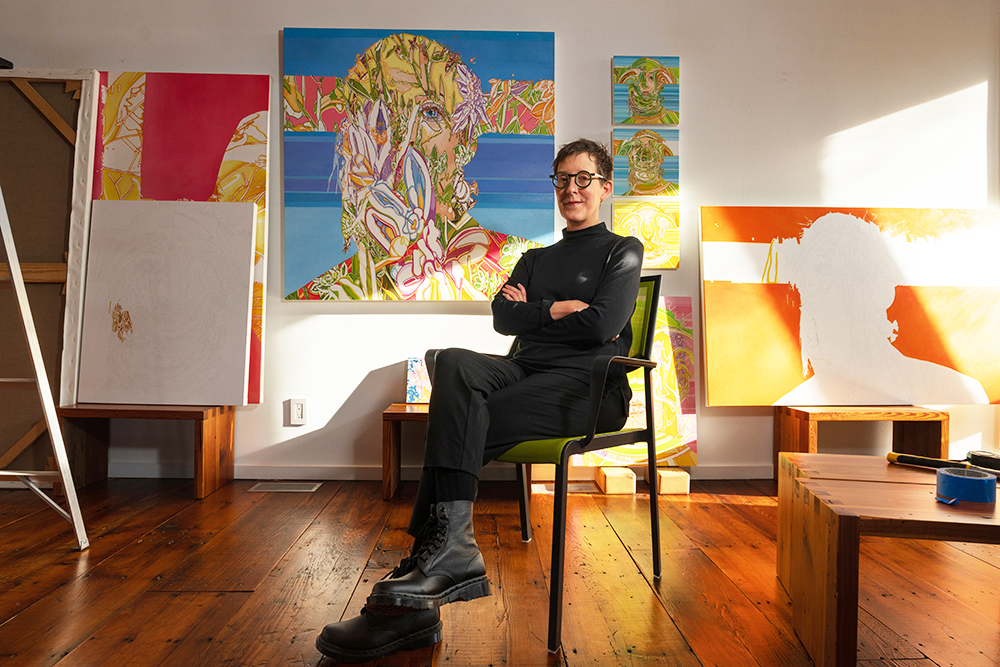Artist’s Statement

I have worked with the figure for many years, especially with a focus on portraiture, but I do not portray a particular person or depict a straightforward narrative. My figures are a blend of realism and abstraction, and my intention is to make a presence of something that is not always a realistic human form. The figures, which are usually female, are frequently wrapped, preserved, and protected in some fashion, such as with a covering of cloth, calligraphy, tattoos, flowers and other organic forms, masks, or headware, including helmets, caps, and even clouds of light. These coverings function on many levels. They have a purpose beyond that of protection or decoration. They sometimes serve as signs or symbols and can assist the wearer by psychologically placing her in an extraordinary realm outside mundane reality. Evoking a sense of solitude, they are usually portrayed alone and absorbed in their own world. They often face the viewer with a direct gaze, but their expression and private intentions are not fully revealed. I imagine them as having some kind of eventful life that takes place beyond the boundary of the canvas, and I hope the viewer is drawn into this world and willing to contemplate its possibilities. Some of the same figures occur in several works, much like characters in various scenes of a single drama or in recurring dreams, and the implications of their mysterious, changing roles take on a new meaning with each appearance. I view them as participants in unfinished dramas in which they are forever evolving, consciously choosing their next transformation, and delighting in their ability to move fluidly from one identity to the next.